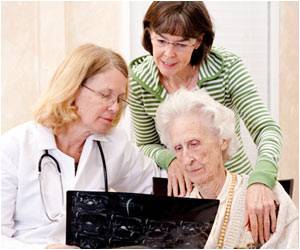
Common authentication methods based on passwords, tokens or fingerprints perform one-time authentication and rely on users to log out from the computer terminal when they leave. But users often do not log out, which is a security risk. The most common solution, inactivity timeouts, inevitably fail security (too long a timeout) or usability (too short a timeout) goals.
One solution is to authenticate users continuously while they are using the terminal and automatically log them out when they leave. Several solutions are based on user proximity, but these are insufficient: they confirm whether the user is nearby but not whether the user is actually using the terminal. Other proposed solutions based on behavioral biometrics (e.g., keystroke dynamics) may not be reliable, as a recent study suggests.
To address this problem, Shrirang Mare, a Dartmouth computer science Ph.D. student, developed an approach called Zero-Effort Bilateral Recurring Authentication, or ZEBRA. In ZEBRA, a user wears a bracelet with a built-in accelerometer, gyroscope and radio on his or her dominant wrist; such bracelets are commonly sold as fitness devices. When the user interacts with a computer terminal, the bracelet records the wrist movement, processes it and sends it to the terminal. The terminal compares the wrist movement with the inputs it receives from the user via keyboard and mouse and confirms the continued presence of the user only if they correlate. Because the bracelet is on the same hand that provides inputs to the terminal, the accelerometer and gyroscope data and input events received by the terminal should correlate because their source is the same – the user's hand movement.
In experiments, ZEBRA performed continuous authentication with 85 percent accuracy in verifying the correct user and identified all adversaries within 11 seconds. For a different threshold that trades security for usability, ZEBRA correctly verified 90 percent of users and identified all adversaries within 50 seconds. Thus, ZEBRA can recognize (in under a minute) when an unauthorized person steps in to use the terminal if the original user has stepped away from the terminal. This kind of quick reaction can prevent mistakes – such as clinical staff accidentally entering information into the wrong patient's medical record – or inappropriate behavior, such as a bystander examining personal medical information or financial data by taking advantage of a computer left open by an authorized user.
"In this work, we focused on the deauthentication problem for desktop computers because we were motivated by associated problems faced by healthcare professionals in hospitals," says the study's senior author Professor David Kotz. "It would be natural to extend ZEBRA to mobile devices, such as smartphones or tablet computers, and we believe this is possible despite some different challenges."
Advertisement
Source-Eurekalert








